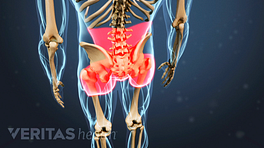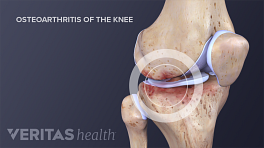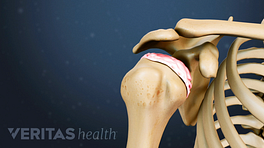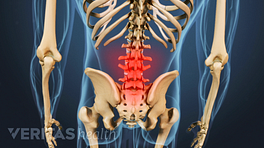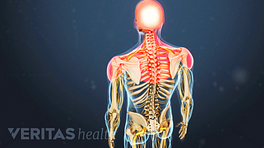Arthritis can cause a wide array of symptoms, such as pain, swelling, and stiffness. The severity of arthritis symptoms is not directly associated with the extent of joint damage, particularly in the early stages of osteoarthritis. 1 Jefferies, MA. Osteoarthritis. In: Efthimiou P, ed. Absolute Rheumatology Review. Springer Nature Switzerland AG; 2020; chap 15. Accessed September 15, 2020. https://doi.org/10.1007/978-3-030-23022-7_15 An x-ray may show mild joint degeneration, and the joint may cause notable pain or no symptoms at all.
Even at its later stages, osteoarthritis symptoms are unpredictable. It is possible to have "bone-on-bone osteoarthritis" and have mild or no symptoms. It is unclear why these differences exist.
This page provides a detailed description of the possible signs and symptoms of osteoarthritis.
In This Article:
- What Is Osteoarthritis?
- Osteoarthritis Symptoms and Signs
- Osteoarthritis Causes
- Osteoarthritis Diagnosis
- Osteoarthritis Treatment
Joint Pain from Osteoarthritis
Reported joint pain from osteoarthritis ranges from dull and aching to sharp and piercing. The pain may worsen during movement. It is also possible for the pain to lessen during activity and then worsen after the activity ends, as joints cool down.
As symptoms progress, the pain may be felt almost constantly. In addition, the joint may feel painful when the skin over it is pressed (tenderness).
Referred pain
While osteoarthritis pain is usually felt in the affected joint, it is possible for the pain to be referred to other areas of the body. For example, hip osteoarthritis may lead to knee pain.
Other Signs and Symptoms of Osteoarthritis
While pain may be the most noticeable, there are other characteristic signs and symptoms and osteoarthritis. These include:
Joint stiffness
A common marker of osteoarthritis is stiffness in the joint. Stiffness may be most noticeable first thing in the morning or after a prolonged period of inactivity (such as sitting in a car or airplane). The stiffness usually resolves within 30 minutes of light activity, which can warm up the joints.
Loss of range of motion
While stiff joints may be able to warm up and regain their full range of motion, that is not always the case. It is possible for joints to become less flexible. The loss of range of motion may be caused by bone spurs or other tissue changes.
Swelling
The joint may swell due to excess fluid buildup. This type of swelling is clinically referred to as effusion. If the swelling is moderate to severe, the joint may also feel warm to touch.
Grinding or crunching (crepitus)
As the surfaces of an arthritic joint degenerate, they no longer move smoothly against each other. The joint may produce a grinding or grating sensation as it bends and straightens and/or make sounds, such as crunching or popping.
Any grinding, grating, creaking, cracking, crunching, or popping that occurs when moving a joint is called crepitus. Crepitus is not always a sign of arthritis and is not a cause for concern unless pain or other symptoms are present.
Bone spurs
Friction and pressure between a joint’s bones can lead to bone degeneration and the growth of bone spurs. The bone spurs are a sign that the bone is trying to grow new tissue and heal itself.
The medical term for bone spurs is osteophytes. Bone spurs may be visible on x-rays, CT scans, and MRIs.
While bone spurs are a sign of arthritis, they are also a normal sign of aging. Almost everyone develops bone spurs by age 50 or 60 2 Berlin A, Simon D, Tascilar K, Figueiredo C, Bayat S, Finzel S, Klaus E, Rech J, Hueber AJ, Kleyer A, Schett G. The ageing joint-standard age- and sex-related values of bone erosions and osteophytes in the hand joints of healthy individuals. Osteoarthritis Cartilage. 2019 Jul;27(7):1043-1047. doi: 10.1016/j.joca.2019.01.019. Epub 2019 Mar 16. PMID: 30890457. , 3 Eubanks JD, Lee MJ, Cassinelli E, Ahn NU. Does lumbar facet arthrosis precede disc degeneration? A postmortem study. Clinical Orthopaedics and Related Research 2007; 464:184-189. doi: 10.1097/BLO.0b013e3181583d4e As cited in Almeer G, Azzopardi C, Kho J, Gupta H, James SL, Botchu R. Anatomy and pathology of facet joint. J Orthop. 2020;22:109-117. Published 2020 Apr 8. doi:10.1016/j.jor.2020.03.058 and they do not necessarily cause pain.
Loss of function
In addition to a loss of range of motion, other changes may make it more difficult for the joint to work the way it used to. The joint may occasionally lock up or be unable to handle stress or strain.
For example, an arthritic shoulder may make it more difficult to lift an item over the head. A moderately to severely arthritic hip may result in a limp while walking.
Joint deformity
Bone spurs or other changes in the joint may lead to a noticeable physical deformity. For example, the arthritic joints in the fingers may become enlarged or the knees may appear bowlegged.
One or more of these signs and symptoms may be due to osteoarthritis. A diagnosing physician can determine if osteoarthritis or another disease or injury is the underlying problem.
- 1 Jefferies, MA. Osteoarthritis. In: Efthimiou P, ed. Absolute Rheumatology Review. Springer Nature Switzerland AG; 2020; chap 15. Accessed September 15, 2020. https://doi.org/10.1007/978-3-030-23022-7_15
- 2 Berlin A, Simon D, Tascilar K, Figueiredo C, Bayat S, Finzel S, Klaus E, Rech J, Hueber AJ, Kleyer A, Schett G. The ageing joint-standard age- and sex-related values of bone erosions and osteophytes in the hand joints of healthy individuals. Osteoarthritis Cartilage. 2019 Jul;27(7):1043-1047. doi: 10.1016/j.joca.2019.01.019. Epub 2019 Mar 16. PMID: 30890457.
- 3 Eubanks JD, Lee MJ, Cassinelli E, Ahn NU. Does lumbar facet arthrosis precede disc degeneration? A postmortem study. Clinical Orthopaedics and Related Research 2007; 464:184-189. doi: 10.1097/BLO.0b013e3181583d4e As cited in Almeer G, Azzopardi C, Kho J, Gupta H, James SL, Botchu R. Anatomy and pathology of facet joint. J Orthop. 2020;22:109-117. Published 2020 Apr 8. doi:10.1016/j.jor.2020.03.058


